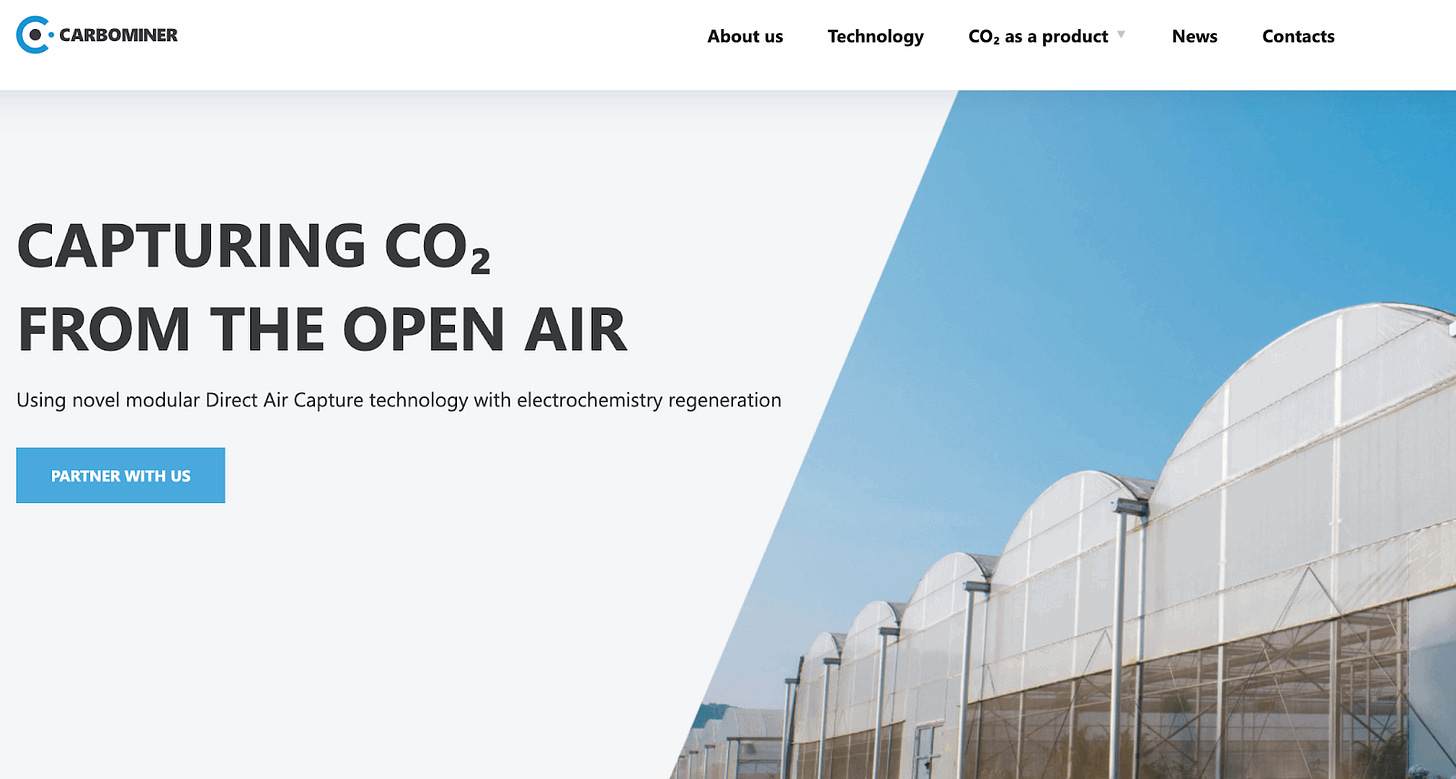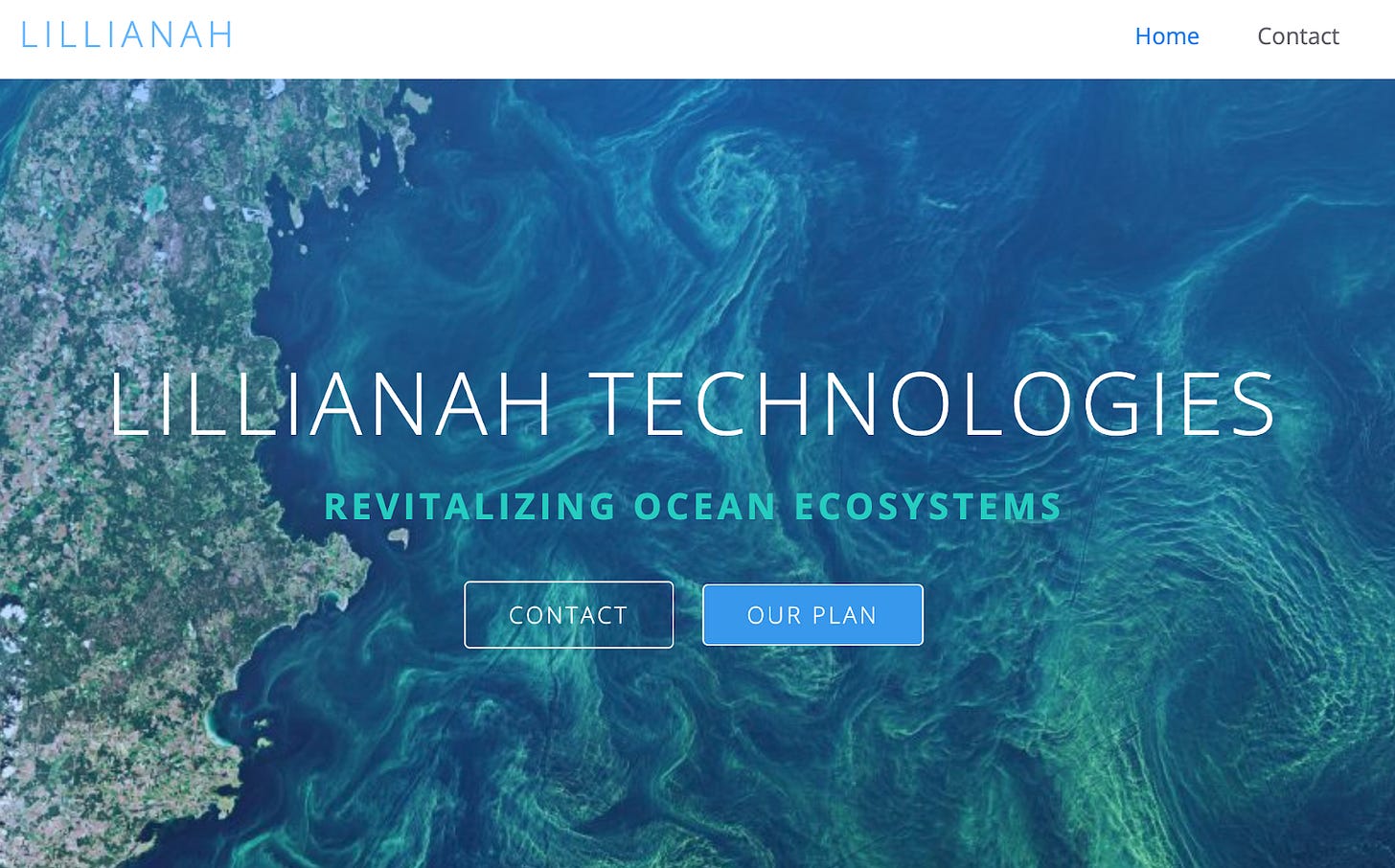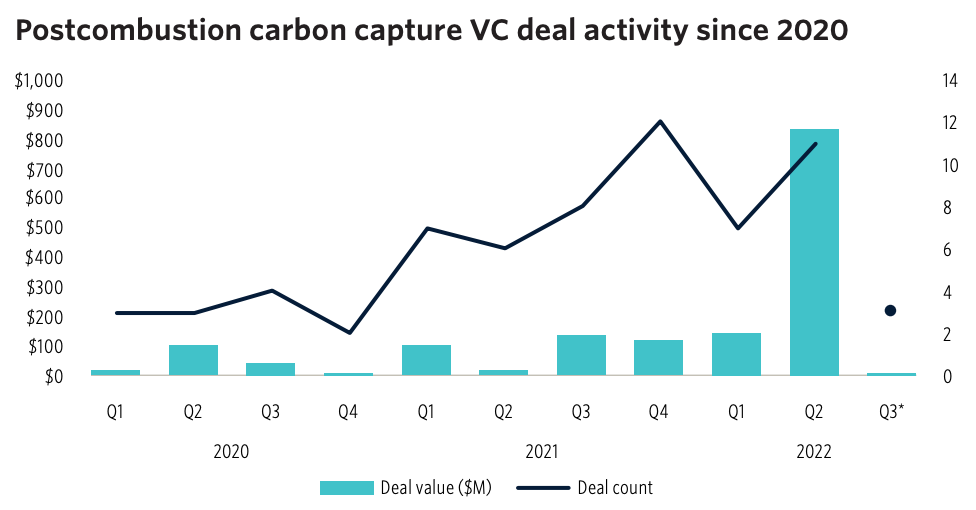The True Efficacy of Carbon Removal Technology
Carbon capture technology has recently become very popular, but there are valid questions about its ability to make a meaningful impact on the climate and our net zero goals.
With dire forecasts of temperature rises, governments, scientists, and climate advocates are serious about how we could engineer solutions to bring us back from the point of no return. Carbon dioxide removal (CDR) technology is one of these categories of solutions that can help mitigate climate change by reducing the overall concentration of CO2 in the atmosphere to help us limit the effects of climate change.
What is Carbon Removal?
Carbon removal is a process that involves capturing carbon dioxide emissions from the atmosphere and then either reusing, storing, or disposing of it safely.
There are three main stages in the carbon capture process:
Capture: CO2 emissions are separated from other gases produced during the combustion of fossil fuels or other industrial processes. There are several methods for capturing CO2, such as pre-combustion capture, post-combustion capture, and oxyfuel combustion. These methods use various technologies, including absorption, adsorption, membranes, and cryogenics, to separate carbon dioxide from other gases.
Transport: Once the CO2 has been captured, it needs to be transported to a storage site. This can be done using pipelines, ships, or trucks, depending on the distance and the amount of the gas to be transported. In most cases, pipelines are the preferred method due to their efficiency and lower environmental impact.
Storage: The final step in the CCS process is storing the captured CO2, usually in geological formations deep underground. These formations can include depleted oil and gas reservoirs, saline aquifers, and unmineable coal seams. The CO2 is injected into these formations, where it can be trapped and stored safely for thousands of years.
Carbon capture is considered an essential climate mitigation technology as it can remove CO2 emissions from the atmosphere. It can also be used in combination with other technologies, like bioenergy with carbon capture and storage (BECCS), which can result in net-negative emissions by removing CO2 from the atmosphere. However, there are challenges to be addressed, such as high costs, scalability, and public acceptance to fully realize the potential of carbon capture and storage.
Types of Carbon Removal Methods
1. Natural Methods
Afforestation and Reforestation
Planting trees is a nature-based solution to carbon removal. Through the process of photosynthesis, trees absorb CO2 from the atmosphere and store it in their biomass (trunks, branches, leaves, and roots) and in the soil. Afforestation involves planting trees on previously non-forested land, while reforestation refers to replanting trees in areas where forests have been depleted. These methods not only help sequester carbon but also provide numerous co-benefits, such as preserving biodiversity, improving water quality, and supporting local economies.
Soil Carbon Sequestration
Soil is a major carbon reservoir, containing more carbon than the atmosphere and vegetation combined. Soil carbon sequestration involves enhancing the soil's capacity to store carbon through practices like regenerative agriculture, no-till farming, cover cropping, and compost application. By improving soil health, these practices can increase the amount of organic matter in the soil, which in turn boosts the soil's ability to store carbon.
Other Natural Methods
There are multiple other less popular but still effective natural processes that help remove carbon from the atmosphere:
Wetland Restoration: Wetlands, like marshes and peatlands, are carbon sinks that can store significant amounts of CO2. Restoring and protecting these ecosystems helps sequester carbon.
Ocean Fertilization: This approach involves adding nutrients, such as iron, to the ocean to stimulate the growth of phytoplankton. These microscopic plants absorb CO2 as they grow and, when they die, can sink to the ocean floor, effectively sequestering carbon.
Coastal Ecosystems Management: Coastal ecosystems, such as mangroves, seagrasses, and salt marshes, are efficient carbon sinks. Preserving and restoring these ecosystems can help remove CO2 from the atmosphere.
Grazing management: Adjusting grazing practices, such as rotational grazing, can improve soil health and increase carbon storage in grasslands.
Biochar: Biochar is a type of charcoal produced by burning organic matter in a low-oxygen environment. When applied to soils, it can help retain water and nutrients while increasing carbon storage.
2. Technology Methods
Carbon Capture and Storage (CCS)
CCS involves capturing CO2 emissions from large point sources like power plants and industrial facilities and then transporting and storing the gas in geological formations. This technology has the potential to significantly reduce CO2 emissions from some of the largest sources, making it a potentially crucial component of climate change mitigation strategies.
Direct Air Capture (DAC)
DAC is an emerging technology that extracts CO2 directly from the ambient air. This process uses chemical processes, typically involving sorbents, to selectively bind CO2 from the air, followed by a regeneration step that releases the captured CO2 for storage or utilization. DAC systems can be deployed anywhere and are not limited to point sources, making them a versatile carbon removal option. However, it’s currently energy-intensive and expensive, so ongoing research and development are needed to improve its efficiency and cost-effectiveness.
Enhanced Weathering
This process accelerates the natural weathering of minerals to remove CO2 from the atmosphere. When certain minerals, such as olivine and basalt, interact with CO2 and water, they undergo chemical reactions that convert carbon dioxide into stable carbonate minerals. By grinding these minerals into fine particles and spreading them on land or in oceans, the rate of weathering can be increased, leading to more efficient CO2 removal. Enhanced weathering has the potential to store large amounts of CO2, but it is still a developing technology, and more research is needed to determine its scalability, environmental impacts, and long-term storage potential.
Why Is Carbon Removal Necessary?
Addressing the Urgency of Climate Change
The increase in greenhouse gas emissions, primarily carbon dioxide, has led to a rapid rise in global temperatures and consequent climate change impacts, such as more frequent and severe weather events, rising sea levels, and loss of biodiversity. To mitigate these impacts and limit global warming to 1.5°C or well below 2°C, as stated in the Paris Agreement, we need to significantly reduce greenhouse gas emissions and actively remove CO2 from the atmosphere.
Along with the attempts to promote renewable energy sources usage, enhance energy efficiencies, and adopt sustainable land-use practices, carbon removal tech gives us the possibility of getting to net zero without the need to invest heavily in lowering hard-to-abate emissions.
Co-Benefits of Carbon Removal
In addition to addressing climate change, many carbon removal methods offer a range of co-benefits. For instance, nature-based solutions like afforestation, reforestation, and soil carbon sequestration can improve soil health, increase crop yield, enhance water quality, and protect and restore ecosystems, leading to increased biodiversity.
These solutions can also create new economic opportunities and support local communities through job creation and sustainable resource management. Technological carbon removal methods, such as carbon capture and storage (CCS) or direct air capture (DAC), can stimulate innovation, create new industries, and provide opportunities for collaboration between the public and private sectors.
The True Potential of Carbon Removal
1. Afforestation or Reforestation Can Remove Significant Amounts of Carbon from the Atmosphere
Afforestation and reforestation could remove between 0.5 and 10.1 metric gigatons of carbon dioxide equivalent per year by 2050. To put this into context, in 2022, global greenhouse gas emissions were around 36.8 Gigatons. Achieving the upper end of the estimate (10.1 GtCO2e) would represent a substantial contribution to net emissions reduction. However, even the lower end of the estimate (0.5 GtCO2e) would still make a meaningful impact, especially when combined with other mitigation strategies.
How much carbon removal can be done via afforestation or reforestation depends on factors like the availability of land, the type of tree species planted, the pace of tree growth, management practices, and potential changes in policies and societal behavior. It’s difficult to predict with certainty whether we will achieve the upper or lower end of this range by 2050, but the level of success will largely depend on the collective efforts of governments, businesses, and individuals in addressing the factors outlined above.
2. Carbon Capture, Utilization, and Storage Facilities Capture Almost 45 Mt CO2 Annually
Currently, about 35 industrial facilities are utilizing carbon capture, utilization, and storage (CCUS) technologies in various sectors, including industrial processes, fuel conversion, and power generation. These facilities have a combined annual capture capacity of nearly 45 million metric tons of CO2. Despite previously lagging behind expectations, CCUS deployment has gained significant momentum in recent years, with approximately 300 projects at different stages of development throughout the CCUS value chain.
Startups are Coming Up with Innovative Carbon Capture Methods
1. Climeworks Uses Direct Carbon Capture
Climeworks uses a three-step direct air capture process to capture CO2:
Step 1: A fan situated within the collector draws in ambient air. As the air flows through an internal filter, the carbon dioxide particles are trapped.
Step 2: Once the filter reaches its maximum capacity for CO₂, the collector shuts, and the temperature inside rises to approximately 100°C, about the same temperature as boiling water.
Step 3: At this elevated temperature, the filter releases the captured CO₂, which can then be stored.
The company has already launched its first large-scale carbon capture plant in Iceland called Orca, which helps them capture thousands of tons of CO2. Their ultimate goal is to capture Gigatons of carbon dioxide and achieve climate impact at scale till 2050.
Climeworks is one of the leading carbon capture tech companies in the world, but it is unclear what their impact to date has been. They have not publicized how much carbon they have removed from the atmosphere, but their newest facility will have a nominal capacity of just 36,000 tons removed per year.
2. Carbominer Uses Novel Modular Direct Air Capture Technology with Electrochemistry Regeneration
Carbomine is a Ukrainian hardware startup that has developed a new modular Direct Air Capture technology designed for local CO2 capture near places of use. Carbominer's capture efficiency is based on a number of innovative engineering solutions. Key competitive advantages of Carbominer include the mobility of their capture modules and the inherent capacity to utilize intermittent renewable energy sources effectively.
3. Barton Blakeley Uses Rocket Technology to Burn Carbon Dioxide
Barton Blakeley’s carbon capture system, HYPER XI, converts carbon dioxide into valuable products in a process that requires no heat or electrical input. Through this method, carbon emissions, instead of being the problem, become part of fueling the solution to climate change. They have designed, developed, and patented an advanced emission recovery system that's based on the principles of aerospace engineering and advanced material science.
4. Novocarbo Builds Biochar Products to Reduce Carbon Emissions
Novocarbo Biochar is at the forefront of the biochar industry. Over recent years, they have grown to become one of the largest distribution networks and trading platforms for biochar and its derivatives in Europe. Their carbon-neutral material is utilized across various applications, including industrial feedstocks, agriculture, water treatment, and decarbonizing construction materials. Collaborating with global corporations and research institutions, the company is dedicated to discovering new applications and expanding the use of biochar.
5. CarbonSpace Uses Satellite-Powered Platform for Carbon Capture
CarbonSpace is a SaaS for estimating carbon footprint from land use. It gives you historical data since 2000, has customizable analytical dashboards and indicators, and also provides companies with monthly and annual breakdowns asset-wise. You can integrate satellite-based carbon emission estimations in your product to get fresh insights regularly. Currently, businesses in 5 specific sectors can leverage CarbonSpace:
Food and Agriculture
Nature-based carbon removal
Forestry, Lumber, Pulp and Paper
Finance and Insurance
ESG and Consulting
6. Lillianah Uses Phytoplankton to Restore Our Oceans While Removing CO2
Lillianah Technologies aims to restore balance to marine ecosystems disrupted by pollution, fertilizer, and/or other human-induced factors.
Hypoxic dead zones are worsening for a number of reasons, including but not limited to agricultural practices and an intensified hydrological cycle. Lillianah’s solution focuses on restoring the natural and native phytoplankton food web of critical regions to reduce hypoxia and ocean acidification and enhance carbon removal from the atmosphere. This restoration will promote the repopulation of marine life, in turn supporting local stakeholders.
The company collaborates with regulators and permitting authorities adopts site-specific approaches, and conducts extensive testing throughout marine activities. Their interdisciplinary approach combines biology with physical sciences to understand and address the ecological imbalances and resulting dead zones or red tides in our oceans.
Funding Specific to Carbon Capture
AirMiners Is an Organization Built Specifically to Help Carbon Capture Startups
AirMiners offers three categories for you to join, depending on where you are in the carbon removal journey:
1. You’re Starting a Carbon Removal Company
AirMiners offers Launchpad, an accelerator program for founders who want to achieve scale quickly. Here’s what Launchpad offers:
Communicate your value clearly to customers and investors
Solidify your unit economics and ensure your technology is carbon-negative
Understand the carbon removal market ecosystem and identify buyers for your carbon removal credits
Learn negotiation skills to maximize your success in customer and investor engagements
Demystify fundraising and capital acquisition
Transform your relationship to time, time management, and common founder stressors
2. You Want to Network with Fellow Innovators
Join a community of 1,600 innovators and learn about their ideas for carbon removal. You can also attend events AirMiners host at least twice a month. These events include a deep dive into carbon capture-related topics with scientists, discussion sessions with climate tech VCs, and simple networking events. You can also refer to the AirMiners’ archives dated back to the Spring of 2020, which consist of 80 recordings covering topics from capture and storage technology deep dives, policy, and interviews with leading companies.
3. You Want to Explore Carbon Removal and Learn More
AirMiners offers a 6-week group learning crash course for people who are new to carbon removal. With this course, you can talk to the network about carbon capture, find a job, or start a company.
$784.4 Million VC Investment into 2 Carbon Capture Companies in Q2 of 2022
According to PitchBook, Venture capital investment in post-combustion carbon capture companies and startups reached a record $882.2 million in Q2 of 2022.
Major deals included Climeworks' $634.4 million series F round and Carbon Clean's $150 million series C raise. The sudden rise in investment is because VCs understand that carbon removal is essential for a net-zero world, particularly in industries like aviation and cement production. Regulatory changes, such as the Inflation Reduction Act, have made carbon capture more appealing by increasing tax credits and lowering eligibility thresholds.
VC Fund Counteract Raises $18 Million for Carbon Removal
Counteract, a London-based venture capital fund focused on carbon removal technologies, has reached a first close of £15 million (~$18 million) out of its targeted £35 million ($42 million) inaugural fund. The fund invests in companies with the potential to remove 500 million tonnes of CO2 by 2050. Counteract's portfolio already includes 12 companies working on various carbon removal techniques. The team plans to expand its investments beyond Europe and explore solutions with additional benefits, such as cement production from recycled carbon.
Invest to Find Breakthroughs in Technology
Carbon capture and sequestration (CCS) holds considerable promise in the global pursuit of net-zero emissions by 2050. However, it is crucial to maintain a balanced and sceptical perspective when evaluating the feasibility of CCS as a primary solution. The high costs associated with developing and deploying CCS technology may present significant challenges. Public investment is likely required to offset risks to venture capitalists and spur widespread adoption of CCS.
There are still concerns about the long-term storage, regulatory frameworks, and potential unintended consequences of the technology. In light of these concerns, it is essential for governments, corporations, and investors to consider a diversified approach to climate solutions.
This would involve investing in CCS research and innovation while also prioritizing other sustainable technologies and practices. By pursuing a multifaceted strategy, we can work towards a more sustainable future that accounts for the potential risks and rewards of carbon capture and sequestration.















